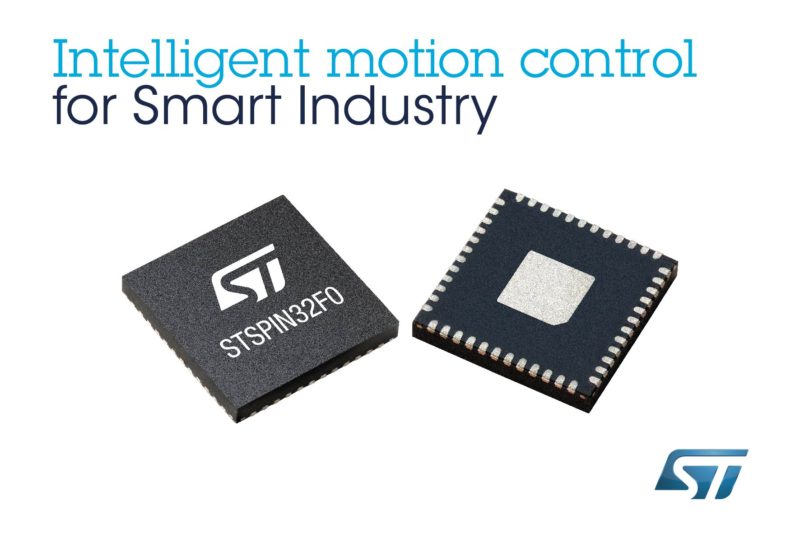- Highly integrated system-in-package simplifies intelligent motor control for smart-manufacturing equipment, drones, high-performance home appliances, and portable BLDC (Brushless DC) motors
- STM32 microcontroller-based development leverages powerful ecosystem comprising tools and software, which includes motor-control algorithms
New Delhi, November 11, 2016 – STMicroelectronics (NYSE: STM), a global semiconductor leader serving customers across the spectrum of electronics applications, is accelerating smart industry, also known as smart manufacturing or Industry 4.0, with a powerful single-package device for intelligent motor control.

ST’s new STSPIN32F0 motor-control system-in-package combines the power and flexibility of a microcontroller-based drive with ease of use and space efficiency. Target applications include smart-manufacturing equipment, power tools and cooling fans, as well as emerging high-tech product categories such as drones, small robots, and home appliances containing high-efficiency motors, such as high-performance portable vacuum cleaners or air purifiers.
“Designers of Industry 4.0 and high-end consumer electronics systems need freedom to optimize their motor-control strategy, as well as high processing performance to enable autonomous operation with minimal intervention from a central controller,” explained Domenico Arrigo, General Manager, Industrial and Power Conversion Division, STMicroelectronics. “The STSPIN32F0 makes these qualities accessible in a convenient and space-efficient system-in-package, taking advantage of the power-control libraries and algorithms available from our uniquely rich STM32 ecosystem to streamline and simplify the development of intelligent and highly-featured precision motion controls.”
The STSPIN32F0 combines a microcontroller and an analog IC in a tiny 7mm x 7mm QFN package, delivering the flexibility and power of a microcontroller-based motor drive with the convenience, simplicity, and space-efficiency of a single IC. The solution is equally attractive for developers with existing investment in proprietary motor-control IP, or those seeking an off-the-shelf motor-control algorithm.
Compared to other microcontroller-based motor-drive solutions, the STSPIN32F0 significantly simplifies design challenges by leveraging the extensive STM32 development ecosystem, with software tools, firmware libraries and middleware available on top of the popular motion-control algorithms such as Field-Oriented Control (FOC) and 6-step control to streamline firmware development.
The STSPIN32F0 motor-control system-in-package is in production now in 7mm x 7mm QFN, priced from $1.95 for orders of 1000 pieces.
Further Technical Information:
The STM32F0 microcontroller inside the STSPIN32F0 features the ARM® Cortex®-M0 core, which is capable of hosting versatile motor-control algorithms such as sensored or sensorless FOC, six-step control, and others. Its high performance enables fast algorithm-execution times, needed for precision control of torque and speed up to high rpm, with bandwidth and headroom to support additional functionality.
The highly integrated analog IC embedded in the STSPIN32F0 implements a three-phase, half-bridge gate driver with integrated bootstrap diodes. Gate-drive current of up to 600mA allows designers to select from a wide variety of power MOSFETs of an adequate rating for the chosen motor. The built-in protection mechanisms include real-time programmable over-current protection, cross-conduction prevention to eliminate potentially damaging shoot-through currents, and under-voltage and over-temperature protection.
The integrated operational amplifiers allow maximum flexibility to design cost-effective sensorless or Hall-effect sensor feedback systems.
Saving additional external components and helping to simplify system design, an internal 3.3V DC-DC buck converter and 12V LDO linear regulator provide the voltage rails to supply the MCU, the external circuitry and the gate drivers, further enhancing efficiency. The IC can be put into standby mode to disable all the internal circuitry apart from the DC-DC converter that supplies the MCU, thus reducing power consumption to a minimum.






